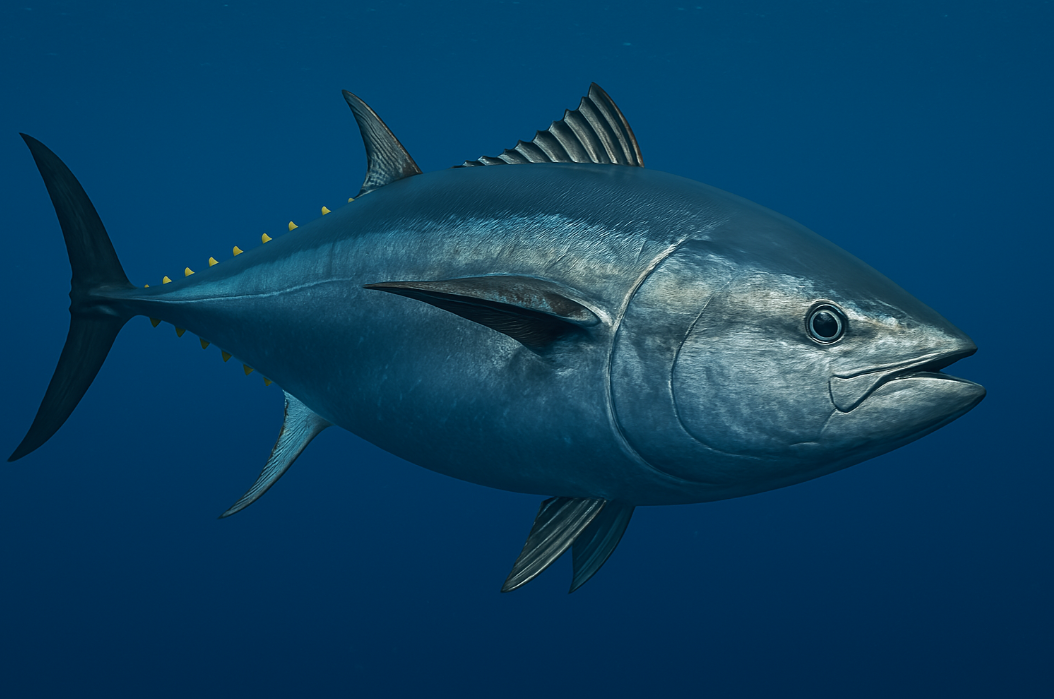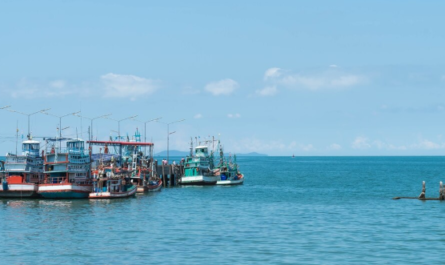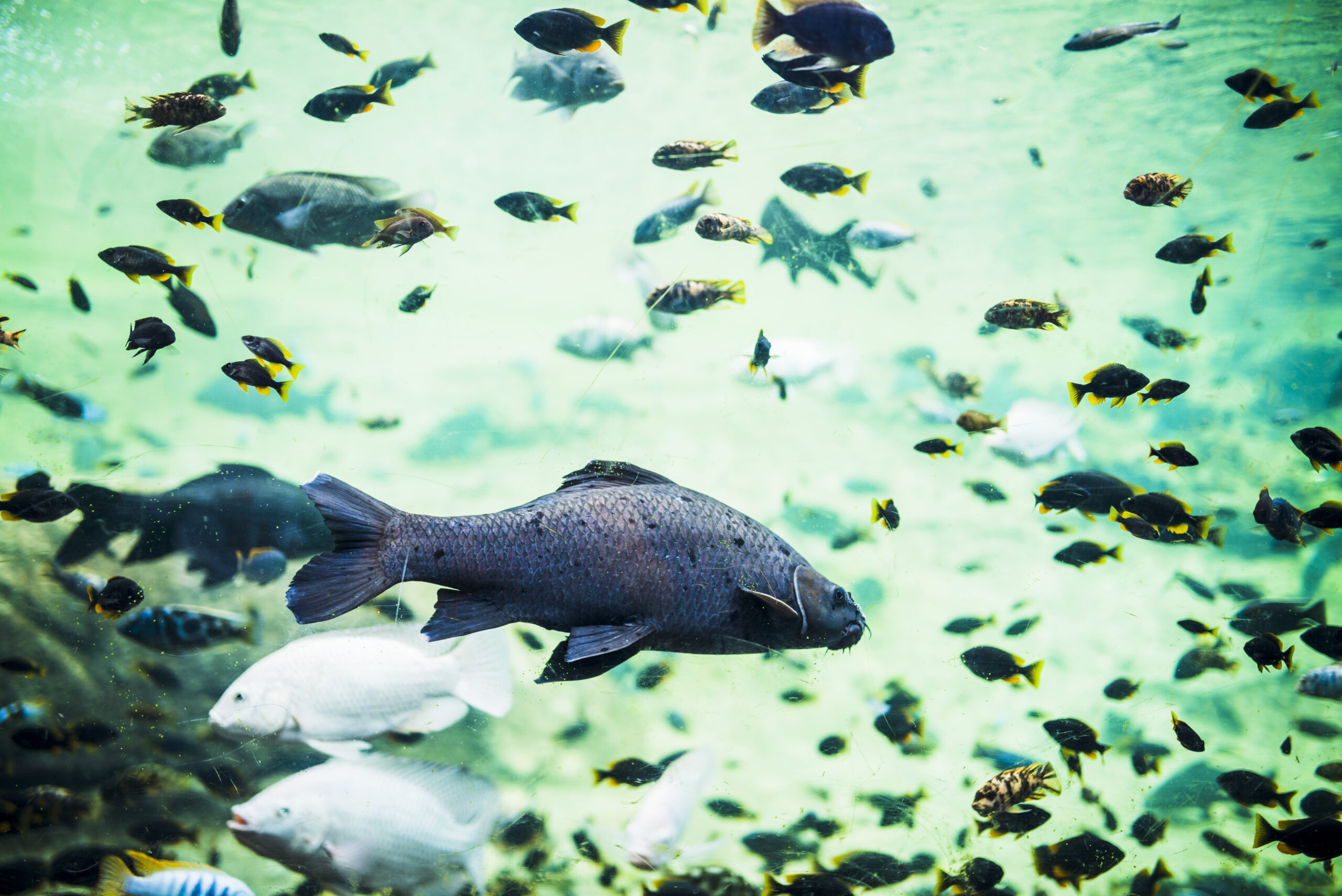Atlantic Bluefin Tuna are among the most iconic and valuable fish in the world, celebrated for their size, strength, and culinary excellence. However, decades of overfishing, illegal harvesting, and habitat degradation have pushed this magnificent species to the brink of collapse. Today, urgent conservation measures are being implemented by governments, scientists, and environmental organizations to save the Atlantic Bluefin Tuna and restore balance to marine ecosystems. In this comprehensive article, we explore the challenges facing Atlantic Bluefin Tuna, the critical role they play in global marine biodiversity, and the multifaceted conservation efforts that aim to secure their future.
1. The Significance of Atlantic Bluefin Tuna
A. Biological and Ecological Importance
Atlantic Bluefin Tuna (Thunnus thynnus) are apex predators, meaning they occupy the top tier of the marine food chain. Their presence in the ocean indicates the health of the ecosystem, as they play a vital role in maintaining the balance of marine life. These tunas are known for their impressive migratory patterns, traveling thousands of miles across the Atlantic between feeding grounds in the Mediterranean and the rich waters off the coast of North America.
- Biodiversity Indicators:
As top predators, bluefin tuna help regulate the populations of smaller fish and invertebrates. Their well-being is closely linked to the overall health of the marine ecosystem, making them a key indicator species for oceanic biodiversity. - Cultural and Economic Value:
Beyond their ecological significance, Atlantic Bluefin Tuna have immense cultural and economic importance. They are a prized catch in commercial and recreational fisheries, especially in countries such as Spain, Italy, and the United States. The fish are also central to culinary traditions, particularly in sushi and sashimi dishes, where their rich flavor and firm texture are highly valued.
B. Historical Overfishing and Current Status
Historically, Atlantic Bluefin Tuna were abundant in the Atlantic Ocean, but over the past several decades, intense fishing pressures have drastically reduced their populations. Advances in fishing technology, combined with high demand in global markets, led to unsustainable harvesting practices that pushed the species toward critically low levels.
- Population Decline:
Studies have shown significant declines in bluefin tuna numbers due to overfishing. The species’ slow growth and late maturity make it particularly vulnerable to overexploitation, as it takes years for populations to recover. - Illegal, Unreported, and Unregulated (IUU) Fishing:
A major contributor to the decline of bluefin tuna populations is IUU fishing. Despite international regulations and quotas, illegal fishing continues to undermine conservation efforts, as unauthorized catches are often not counted in official statistics. - International Concerns:
Conservationists and governments have raised alarms about the fate of Atlantic Bluefin Tuna. The species is listed on various conservation lists, and its declining numbers have prompted international bodies to take coordinated action to reverse the trend.
2. Threats Facing Atlantic Bluefin Tuna
A. Overfishing and Quota Mismanagement
Overfishing remains the most significant threat to Atlantic Bluefin Tuna. Unsustainable fishing practices, driven by high market demand, have led to the depletion of mature individuals before they have a chance to reproduce.
- Fishing Quotas:
Although international organizations like the International Commission for the Conservation of Atlantic Tunas (ICCAT) have established quotas to limit catches, these quotas are often exceeded due to poor enforcement and non-compliance by some fishing fleets. - Bycatch:
In addition to targeted bluefin tuna fishing, bycatch—the unintentional capture of other species—also negatively impacts marine biodiversity and disrupts the balance of the ecosystem.
B. Illegal, Unreported, and Unregulated (IUU) Fishing
IUU fishing is a pervasive problem that continues to undermine conservation efforts for bluefin tuna. It involves the illegal harvesting, misreporting, and non-compliance with international quotas, making it difficult to accurately assess the true population levels of the species.
- Enforcement Challenges:
The vast expanse of the Atlantic Ocean makes monitoring and enforcement particularly challenging. Pirates and unscrupulous fishing operators often exploit these challenges, contributing to significant losses in bluefin tuna numbers. - Economic Incentives:
The high market value of bluefin tuna creates strong economic incentives for illegal fishing, despite the risks of penalties and sanctions.
C. Environmental Changes and Climate Impact
The impacts of climate change add another layer of complexity to the conservation of Atlantic Bluefin Tuna. Changes in ocean temperatures, acidification, and shifts in prey availability can alter migratory patterns and reproductive rates.
- Habitat Alteration:
As ocean conditions change, the habitats that bluefin tuna rely on for feeding and breeding may shift, forcing the species to adapt quickly to new environments. - Ecosystem Disruption:
Climate change can disrupt the delicate balance of marine ecosystems, further stressing bluefin tuna populations already weakened by overfishing.
3. Conservation Efforts to Save Atlantic Bluefin Tuna
A. International Quotas and Regulations
To combat overfishing and ensure the survival of Atlantic Bluefin Tuna, international organizations have implemented quotas and regulations designed to limit catches and promote sustainable fishing practices.
- ICCAT Regulations:
The International Commission for the Conservation of Atlantic Tunas plays a pivotal role in setting annual catch limits for bluefin tuna. These quotas are based on scientific assessments of population levels and are intended to allow for recovery. - Improved Reporting:
Efforts are underway to enhance the accuracy of catch reporting and monitoring. Electronic tracking systems and satellite technology are increasingly used to ensure compliance with quotas. - Stricter Enforcement:
Many nations are ramping up their enforcement efforts to crack down on IUU fishing. Coordinated actions between governments and international bodies are critical to reducing illegal catches.
B. Sustainable Fishing Practices
Sustainable fishing practices are essential to allow bluefin tuna populations to recover. These practices focus on reducing bycatch, minimizing habitat disruption, and ensuring that only sustainable quantities are harvested.
- Selective Gear:
Advances in fishing technology have led to the development of selective gear that targets bluefin tuna more precisely, reducing bycatch of non-target species. - Seasonal Fishing:
Implementing seasonal restrictions during key breeding and migration periods can help protect bluefin tuna when they are most vulnerable. - Eco-Certification:
Programs that certify fisheries for sustainable practices encourage industry-wide adherence to environmentally responsible methods. Consumers increasingly demand sustainably sourced seafood, which in turn drives the industry toward better practices.
C. Research and Monitoring
Ongoing research is crucial to understanding the dynamics of bluefin tuna populations and assessing the effectiveness of conservation measures.
- Tagging and Tracking:
Researchers use satellite tagging to monitor the migratory patterns of bluefin tuna. This data is invaluable in understanding how the species utilizes different parts of the Atlantic and identifying critical habitats. - Population Studies:
Comprehensive population studies help scientists estimate the size, growth, and reproductive rates of bluefin tuna. These studies inform quota decisions and help track recovery efforts. - Collaborative Research:
International research collaborations pool resources and expertise to tackle the complex challenges facing bluefin tuna. By sharing data and methodologies, scientists can develop more effective conservation strategies.
D. Aquaculture and Hatchery Programs
Aquaculture offers a complementary approach to wild-caught fisheries, with potential benefits for conservation.
- Selective Breeding:
Research into the selective breeding of bluefin tuna in controlled environments could reduce the pressure on wild populations by providing a sustainable source of the fish for commercial purposes. - Hatchery Programs:
Some conservation programs are exploring hatchery initiatives to bolster wild populations. While these programs are still in the experimental stage, they represent a potential tool for enhancing the resilience of bluefin tuna populations.
E. Consumer Awareness and Advocacy
Public awareness and consumer choices play a vital role in conservation efforts. Educating consumers about the plight of Atlantic Bluefin Tuna and promoting sustainable seafood choices can drive significant change.
- Campaigns and Certifications:
Various environmental organizations run campaigns to inform consumers about the importance of sustainable tuna fishing. Eco-labels and certifications on seafood products guide buyers to make responsible choices. - Support for Sustainable Fisheries:
By choosing sustainably sourced bluefin tuna, consumers can help create market incentives for responsible fishing practices. This support is crucial for ensuring that fisheries adhere to quotas and sustainable methods. - Advocacy for Policy Changes:
Grassroots advocacy and public pressure can influence policy decisions. When consumers and environmental groups push for stricter regulations and better enforcement, governments are more likely to take decisive action against overfishing and IUU practices.
4. Success Stories and Case Studies
A. Rebounding Populations in Managed Fisheries
There have been promising success stories where strict adherence to quotas and sustainable practices has led to signs of recovery in bluefin tuna populations. Some regions in the Mediterranean have reported gradual increases in spawning stock biomass due to well-managed fishing practices and robust enforcement of quotas. These successes offer hope and serve as models for global conservation efforts.
B. Technological Breakthroughs in Monitoring
Recent advances in satellite tracking and data analytics have provided unprecedented insights into the migratory behavior of bluefin tuna. In one notable case, a collaborative research project between European nations successfully used satellite tags to map the migration routes of bluefin tuna, leading to more accurate quota settings and better protection of critical habitats. These technological breakthroughs not only aid in conservation but also help educate policymakers and the public on the challenges and needs of the species.
C. International Collaboration Driving Change
International efforts, such as those spearheaded by ICCAT, have been instrumental in coordinating conservation strategies across borders. In a recent initiative, several countries in the Atlantic region agreed to implement more rigorous monitoring and reporting systems for bluefin tuna catches. This collective action has led to increased compliance with quotas and a significant reduction in IUU fishing activities, demonstrating the power of global cooperation in tackling complex environmental issues.
5. The Future of Atlantic Bluefin Tuna Conservation
A. Advancing Sustainable Practices
The future of Atlantic Bluefin Tuna conservation lies in continuous improvement and innovation in sustainable fishing practices. As technology evolves, so too will the methods used to ensure that bluefin tuna populations can recover and thrive.
- Enhanced Gear Technology: Future developments in fishing gear may allow for even more precise targeting of bluefin tuna while reducing bycatch. This technology will be critical in ensuring that only the intended species are harvested, protecting the broader ecosystem.
- Adaptive Quota Systems: More dynamic and responsive quota systems, driven by real-time data and predictive modeling, can help adjust catch limits based on current population levels and environmental conditions. This adaptability will be essential as ocean conditions continue to change due to climate factors.
B. The Role of Policy and Regulation
Government policies will remain a cornerstone of conservation efforts. Strengthening international agreements, increasing enforcement of existing regulations, and developing new legal frameworks to combat IUU fishing are all critical steps in ensuring the long-term survival of Atlantic Bluefin Tuna.
- Stricter Enforcement: Enhanced surveillance and legal penalties for illegal fishing practices will help deter IUU activities. International cooperation in law enforcement will be vital to tackle piracy and unauthorized harvesting.
- Sustainable Trade Policies: Policies that promote the trade of sustainably sourced seafood can create economic incentives for responsible fishing practices. As consumer demand for eco-friendly products grows, sustainable tuna becomes not only an environmental imperative but also a market opportunity.
C. Research and Innovation
Ongoing research is critical to understanding the ecological dynamics of bluefin tuna and developing innovative conservation strategies. Future research efforts will likely focus on:
- Genetic Studies: Understanding the genetic diversity of bluefin tuna populations can help inform selective breeding and hatchery programs aimed at bolstering wild populations.
- Behavioral Research: Further studies on the migratory patterns and breeding behaviors of bluefin tuna will provide insights into how environmental changes impact their life cycles and how best to protect critical habitats.
- Interdisciplinary Approaches: Integrating oceanography, marine biology, and climate science will create a more holistic understanding of how bluefin tuna fit into the larger marine ecosystem. This interdisciplinary approach is essential for developing comprehensive conservation strategies.
D. Engaging Consumers and Building Global Awareness
Educating the public and engaging consumers in conservation efforts will be pivotal for the future of Atlantic Bluefin Tuna. As awareness grows, consumer choices can drive significant change in the industry.
- Global Campaigns: International campaigns that highlight the importance of sustainable fishing and the plight of bluefin tuna can mobilize public support and encourage responsible consumption.
- Eco-Labels and Certifications: Expanding the use of eco-labels that certify sustainably caught bluefin tuna can help guide consumer behavior and shift market dynamics toward sustainability.
- Interactive Platforms: Digital platforms and social media campaigns can be used to educate consumers, share success stories, and promote the benefits of sustainable seafood. Engaging content, such as documentaries and interactive maps, can bring the story of bluefin tuna conservation to a global audience.
6. Conclusion: A Commitment to the Future of Atlantic Bluefin Tuna
The fate of Atlantic Bluefin Tuna is emblematic of broader challenges facing our oceans today. Decades of overfishing, coupled with the relentless pressures of climate change and illegal harvesting, have pushed this iconic species to the brink. Yet, there is hope. Through coordinated international efforts, advances in technology, and a growing commitment to sustainable practices, the conservation of Atlantic Bluefin Tuna is gathering momentum.
Efforts to protect and restore bluefin tuna populations are multifaceted, involving regulatory reforms, sustainable fishing practices, innovative research, and public awareness campaigns. These initiatives not only aim to stabilize and recover bluefin tuna populations but also serve as a model for preserving marine biodiversity worldwide. The successful conservation of this species will have far-reaching benefits, supporting sustainable fisheries, maintaining ecological balance, and safeguarding a vital component of the global food chain.
For the global community, the story of Atlantic Bluefin Tuna is a call to action—a reminder that the health of our oceans is intricately linked to our own well-being. It is a testament to the power of collaboration, innovation, and unwavering commitment to environmental stewardship. As we continue to harness the latest technologies and implement robust policy measures, the hope is that the majestic bluefin tuna will not only survive but thrive for generations to come.
In preserving Atlantic Bluefin Tuna, we are protecting a symbol of marine resilience and a critical resource for global trade and cuisine. The journey toward sustainable fishing and ocean conservation is complex, but with each step, we move closer to a future where both nature and humanity flourish in harmony.
Let this be a rallying cry for all stakeholders—governments, industries, scientists, and consumers alike—to work together in safeguarding our oceans. By supporting sustainable practices and making informed choices, we contribute to a legacy of conservation that honors the beauty, power, and indispensability of Atlantic Bluefin Tuna.
The future of our oceans depends on our ability to act responsibly today. Through concerted efforts and a shared vision of sustainability, we can ensure that the Atlantic Bluefin Tuna continues to grace our seas and tables, symbolizing the enduring spirit of life on the high seas. Now is the time to invest in the future of our marine ecosystems, for in protecting these magnificent creatures, we are ultimately safeguarding our planet’s legacy.



